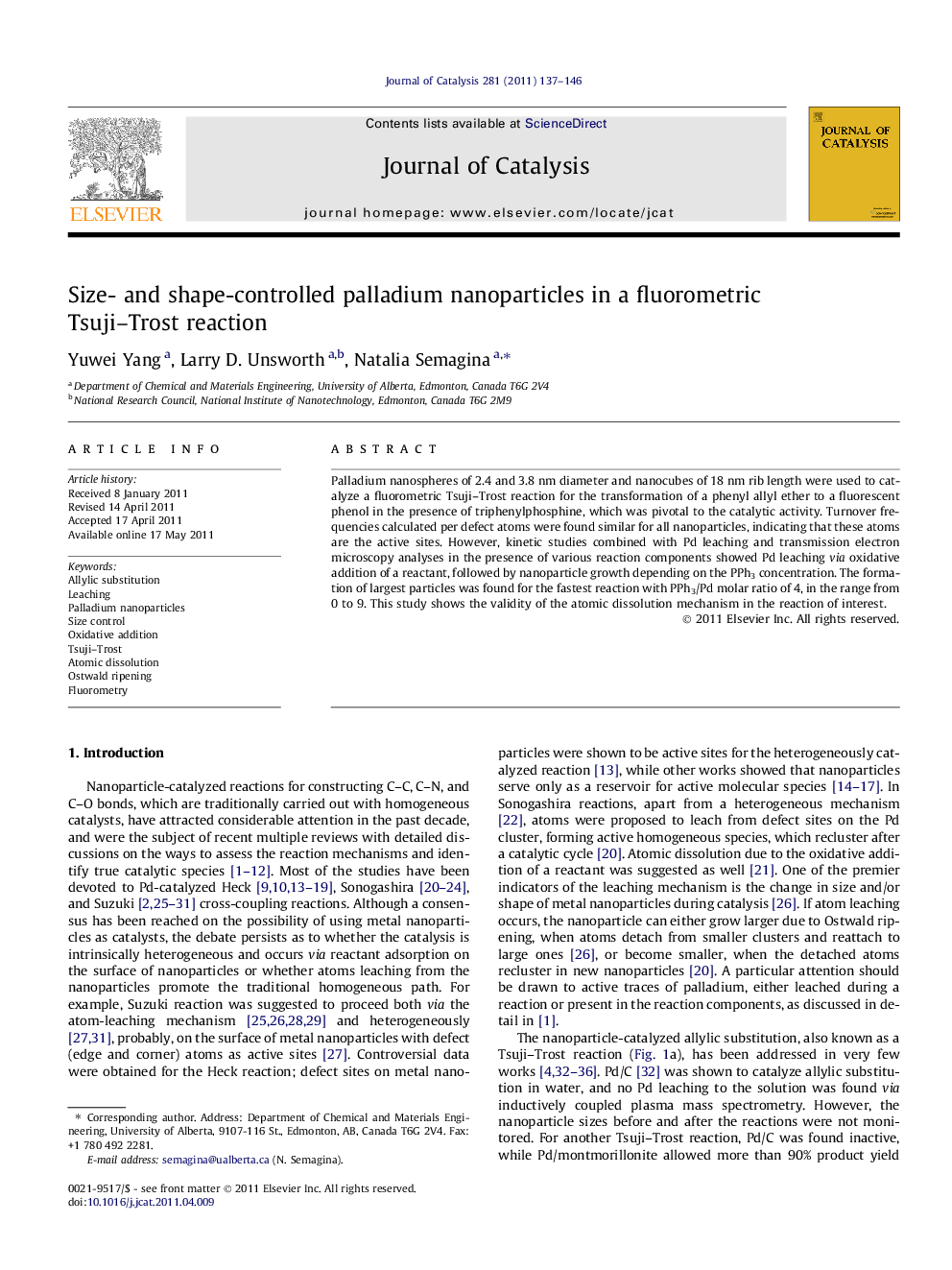| Article ID | Journal | Published Year | Pages | File Type |
|---|---|---|---|---|
| 61662 | Journal of Catalysis | 2011 | 10 Pages |
Palladium nanospheres of 2.4 and 3.8 nm diameter and nanocubes of 18 nm rib length were used to catalyze a fluorometric Tsuji–Trost reaction for the transformation of a phenyl allyl ether to a fluorescent phenol in the presence of triphenylphosphine, which was pivotal to the catalytic activity. Turnover frequencies calculated per defect atoms were found similar for all nanoparticles, indicating that these atoms are the active sites. However, kinetic studies combined with Pd leaching and transmission electron microscopy analyses in the presence of various reaction components showed Pd leaching via oxidative addition of a reactant, followed by nanoparticle growth depending on the PPh3 concentration. The formation of largest particles was found for the fastest reaction with PPh3/Pd molar ratio of 4, in the range from 0 to 9. This study shows the validity of the atomic dissolution mechanism in the reaction of interest.
Graphical abstractPd nanoparticles catalyze Tsuji–Trost reaction for Pd fluorometric detection in the presence of PPh3via atomic dissolution.Figure optionsDownload full-size imageDownload high-quality image (56 K)Download as PowerPoint slideHighlights► Pd nanoparticles catalyze Tsuji–Trost reaction used for Pd fluorometric detection. ► Nanoparticle activity is correlated with the number of defect surface atoms. ► The reaction occurs via atomic dissolution and Ostwald ripening. ► The highest rate is concomitant with the formation of largest nanoparticles. ► Optimum PPh3 concentration exists for the fastest reaction.
